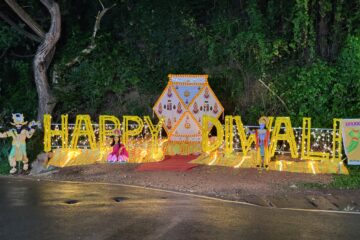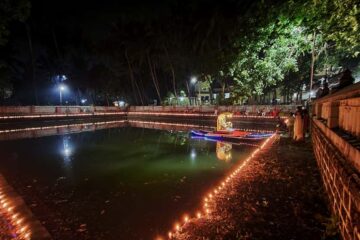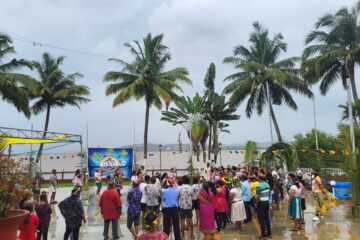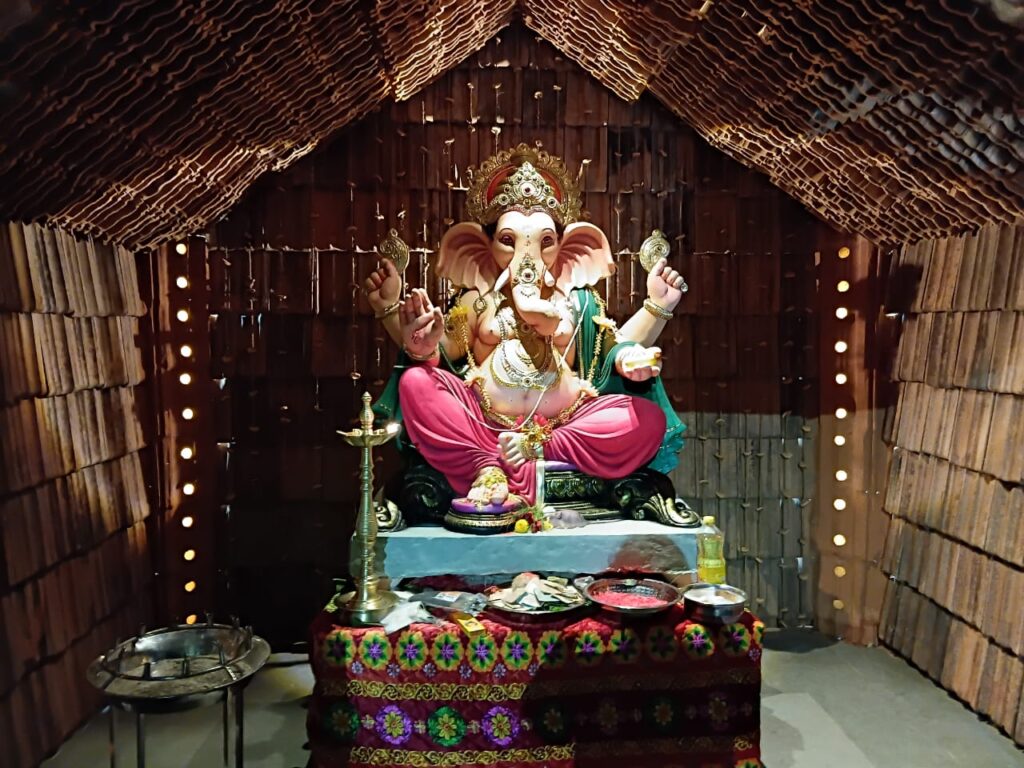
Ganesh Chaturthi: Goa’s Most Beloved and Awaited Festival
The festival of Ganesh Chaturthi is as popular in Goa as it is in Maharashtra. In fact, Ganesh Chaturthi is the most beloved festival of the people of Goa, even surpassing Dussehra and Diwali in enthusiasm. Preparations for the festival begin as early as the month of Shravan. While Goans are generally known for their love of seafood, many strictly follow vegetarianism during Shravan and continue until the Ganesh festival concludes.
About two to three months before Ganesh Chaturthi, local artisans begin crafting Ganesh idols. These clay idols, painted vibrantly, are ready by the end of Shravan.
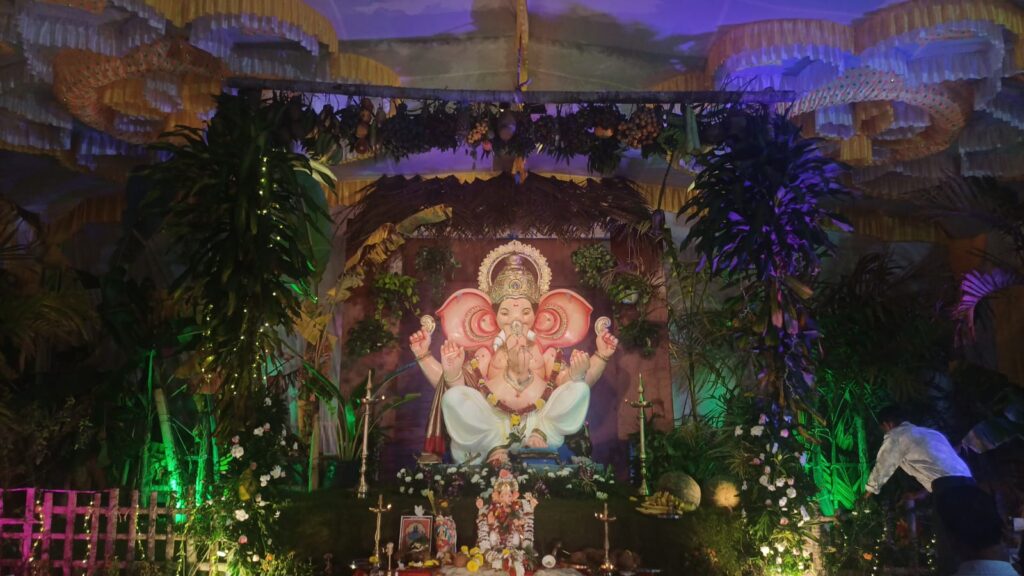
Shravan’s Final Days: A Time for Purity and Preparation
As the last week of Shravan arrives, preparations for Ganesh Chaturthi pick up pace in every household. Homes are cleaned and decorated, and families shop for decorative items, fruits, and vegetables for the Matoli (overhead canopy decoration). Both men and women actively participate in the preparations.
Ancestral Homes: The Heart of Ganesh Chaturthi in Goa
Unlike Maharashtra, where every home hosts Ganpati, in Goa, each family worships Ganpati in their ancestral home. Family members scattered in Goa or living in other states return to their native homes a day or two before the festival. These ancestral homes become vibrant gathering hubs, sometimes hosting 40 to 80 family members together. Cities and towns practically empty out during this time, and even schools remain closed for about eight days.
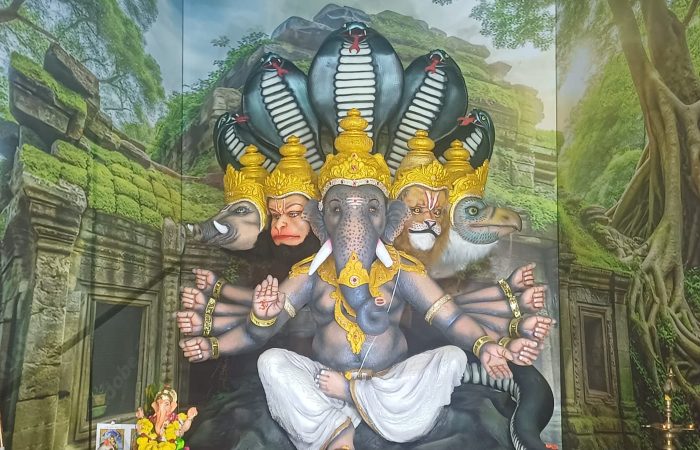
Sacred Timelines: Ganesh Idol Worship Durations Across Goa
In most Goan homes, the Ganesh idol is kept for one and a half days annually. In some households, it is kept for five days. In certain traditional neighbourhoods, a three-year cycle is followed—one and a half days for two years and five days in the third year. Rarely, in some homes, the idol stays for seven days.
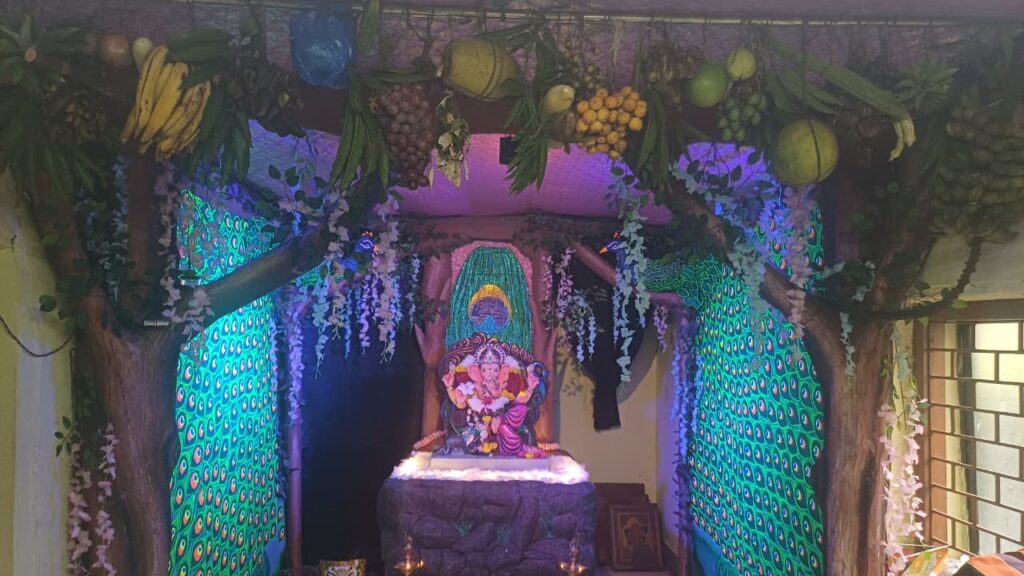
More Than Decoration: The Cultural Significance of Matoli in Goa
In Goa, more emphasis is placed on the Matoli than on elaborate decorations around the idol. The Matoli is a canopy decorated with seasonal fruits, vegetables, and flowers such as mango leaves, torangs, ambades, wild lemons, cucumbers, chibuds, areca nuts, coconuts, and turmeric leaves etc. Markets are filled with Matoli supplies, signaling the arrival of Ganesh Chaturthi.

Flavours of Festivity: Goan Delicacies During Ganesh Chaturthi
While Modaks are offered to Lord Ganesh in Maharashtra; in Goa, Nevri takes center stage. Nevri are crescent-shaped dumplings filled with a sweet mixture of coconut and jaggery or a spicy mixture of chilli powder. Along with Nevri, households prepare other snacks like Chaklis, Shankarpale, and more. On Chaturthi day, Mugagathi (a sprouted moong bean curry) is the main dish, while on Panchami (the fifth day), Khatkhate (a vegetable stew) is the highlight.
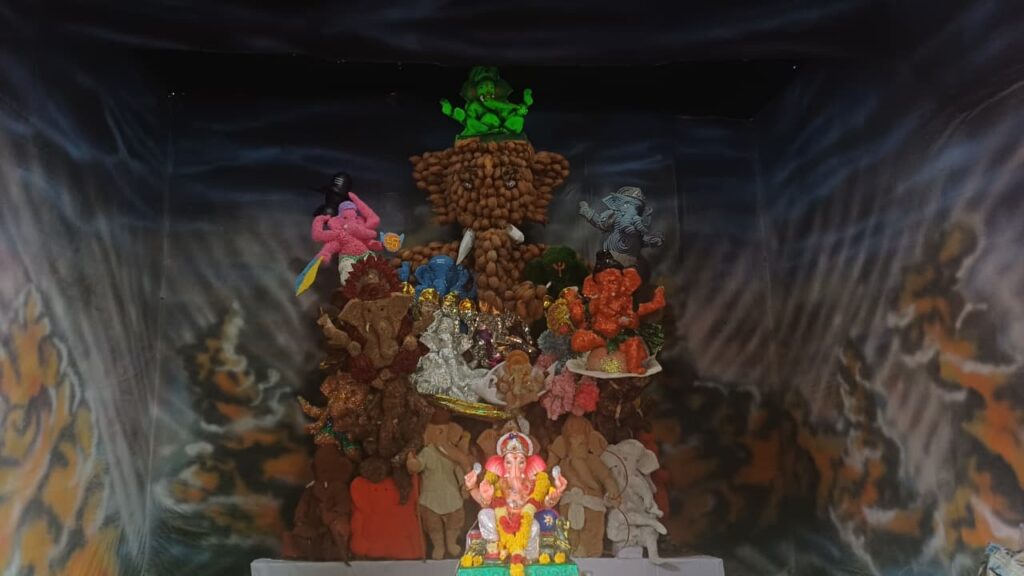
Ghumat Aarti: The Soulful Sound of Goan Ganesh Celebrations
One of the most captivating aspects of Ganesh Chaturthi in Goa is the Ghumat Aarti. It is impossible to imagine an Aarti without the Ghumat (a traditional earthen drum). The Ghumat, Jhanj (cymbals), and Shamel (another traditional percussion instrument) together create a rhythmic harmony. As Ganesh Chaturthi approaches, young boys in every neighbourhood start repairing and tuning their instruments. During the festival, they visit each home in groups to perform the Aarti in the afternoon and evening. Meals are often served only after the Ghumat Aarti.
A Community Farewell: Collective Ganesh Visarjan Traditions in Goa
The immersion (Visarjan) of the Ganesh idol is usually done collectively by all the households in the same locality rather than individually.
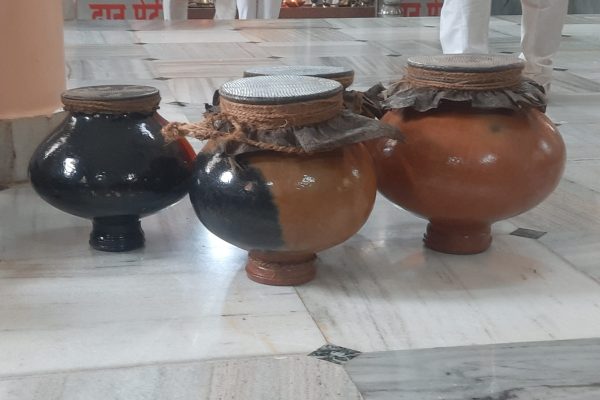
Ghumat Aarti Competitions: Showcasing Rhythm, Skill, and Devotion
As Ganesh Chaturthi nears, several Ghumat Aarti competitions are held across the state, with state-level competitions being the most prestigious. Watching and listening to these boys play the Ghumat Aarti is a delightful experience. Their synchronized rhythm and energetic movements are infectious, spreading a sense of joy and enthusiasm to everyone watching.
A Quiet Devotion: Goa’s Thoughtful Public Ganesh Festivals
Unlike other regions, public Ganesh festivals in Goa are relatively understated. Public Ganesh idols are usually housed in temples or dedicated spaces for nine or eleven days. Fortunately, these public celebrations have not been overtaken by excessive commercialization or noise pollution. During this time, competitions for children and women, devotional music (Bhajans), and cultural programs are organized. Unlike in some places, film songs blaring through loudspeakers are not part of the public Ganesh celebrations in Goa. Additionally, eco-friendly idols and decorations are commonly used.
A Celebration of Culture, Family, and Faith
Ganesh Chaturthi in Goa is more than just a festival—it is a heartfelt reunion of families and a celebration that preserves the cultural traditions of the region while providing a platform for young talent to shine.
